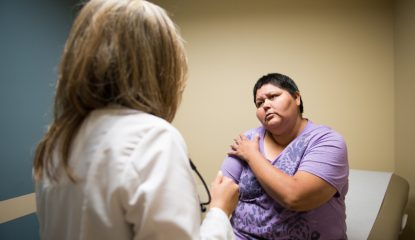Lower-Income And Communities of Color Continue To Struggle To Find Vaccine Appointments, Despite Being Hardest Hit By The Virus
By Consumers For Quality Care, on April 1, 2021

The Ramirez family is just one of many families in Nevada struggling to navigate the coronavirus pandemic. They’ve lost multiple relatives – including one who was just 29 years old – to the virus in Mexico.
Reporting from the Reno Gazette Journal found that in Washoe County, where the Ramirez family lives, the zip codes with the highest infection rates have a higher proportion of lower-income residents and a larger share of people of color, particularly Hispanics. Yet, they’re receiving a disproportionately small share of the vaccine.
Claudia Ramirez works as a waitress and is terrified of infecting her parents with whom she lives, but she isn’t in a priority group despite her frequent interactions with the public. She struggled for weeks to get her parents signed up for vaccine, as she doesn’t have a personal computer and isn’t well-versed with technology.
“I’m just worried about my parents. I’m just wondering, ‘Oh my God, if they get it, are they going to pull through? I would love to see a way that makes it easier for the elderly to get a COVID shot without too much running around,” Ramirez lamented.
In Washoe County, of the almost 100,000 first doses administered, just 9.1 percent went to Hispanics, even though they make up 25 percent of the general population. Data indicates similar disparities exist throughout the state.
Afraid of not having the correct paperwork or insurance, undocumented immigrants are particularly hesitant to get the vaccine, although it is free. Many people in lower-income neighborhoods also work multiple jobs and can’t make regular clinic hours or don’t have access to transportation.
Ramirez was finally able to schedule an appointment for her parents after she spoke to the Reno Gazette.
“Most of the people I talk to, we’re all having trouble (to schedule a shot),” Ramirez said. “They’ve all been trying.”



